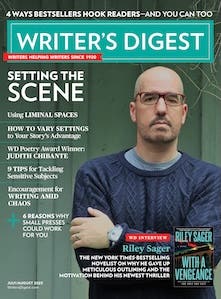Steve Stern: On Inspiration Coming from Another Artistic Medium
Award-winning author Steve Stern discusses how a painter lost in history inspired his new novel, The Village Idiot.
Steve Stern’s fiction, with its deep grounding in Yiddish folklore, has prompted critics such as Cynthia Ozick to hail him as the successor to Isaac Bashevis Singer. He has won two Pushcart Prizes, an O’Henry Award, a Pushcart Writers’ Choice Award, and a National Jewish Book Award.
For 30 years, Stern taught at Skidmore College, the majority of those years as Writer-in-Residence. He has also been a Fulbright lecturer at Bar Elan University in Tel Aviv, the Moss Chair of Creative Writing at the University of Memphis, and Lecturer in Jewish Studies for the Prague Summer Seminars. Stern splits his time between Brooklyn and Balston Spa, New York.
In this post, Steve discusses how a painter lost in history inspired his new novel, The Village Idiot, his hope for readers, and more!
Name: Steve Stern
Literary agent: Liz Darhansoff
Book title: The Village Idiot
Publisher: Melville House
Release date: September 13, 2022
Genre/category: Fiction
Previous titles: The Pinch, The Book of Mischief, The Frozen Rabbi, The North of God, The Angel of Forgetfulness, The Wedding Jester, A Plague of Dreamers, Harry Kaplan’s Adventures Underground, Lazar Malkin Enters Heaven, Isaac and the Undertaker’s Daughter, The Moon & Ruben Shein
Elevator pitch for the book: A wild, effervescent, absinthe-soaked novel that tells of the life of the extraordinary artist Chaim Soutine.
IndieBound | Bookshop | Amazon
[WD uses affiliate links.]
What prompted you to write this book?
A few years ago, while visiting the Barnes Foundation in Philadelphia, I encountered some paintings of an unearthly intensity by an artist I had not previously heard of. They were portraits, landscapes, and still lifes by the painter Chaim Soutine. The colors were kaleidoscopic, faces and bodies fluid and often grotesque, forests and villages tempest-tossed, slaughtered animals as if in the process of releasing their souls. I was spellbound and remained so long after.
Later I read a book called Shocking Paris by Stanley Meisler. It chronicled the history of the School of Paris, a loose confederacy of artists, largely Jews of Eastern European origin working in Paris in the early years of the 20th century. Featured among them was Soutine, an unlettered, morbidly shy, wretchedly impoverished Lithuanian bumpkin who had somehow been afflicted with a passion to paint. His life in that incandescent city at the center of the cultural universe has since become the stuff of legend.
In fact, legend is most of what survives of Soutine’s legacy. His friendship with the artist Amedeo Modigliani, the Cinderella tale of his success, his travels, his lovers, his shadow existence under the Nazi occupation—all have been cited by only the barest of biographical details. Soutine had a mania for covering his tracks. There are catalogs of exhibitions, brief memories by acquaintances, and little else.
As a writer of fiction, I became intrigued to the point of obsession by the mystery of his character. I felt drawn to retell the story of what is known about the maverick artist, and free to imagine the rest.
How long did it take to go from idea to publication? And did the idea change during the process?
I was two or three years into working on another novel when I conceived the idea for a book about Soutine. Eventually the impulse to write the projected book superseded the book in hand, so much so that I abandoned the previous novel, shoved it in a drawer where it remains to this day.
I delivered The Village Idiot to my agent on Election Day of 2020, and she doggedly began shopping it around until she’d placed it in the receptive hands of Melville House and my yeoman editor Carl Bromley.
Did the idea for the book change over time? Not really. If anything, the original impulse deepened and intensified as I traced Chaim’s decades-long flight from his destitute shtetl origins—and how that shtetl, the little Jewish town with its harrowing history, immemorial culture, and pageant of superstitions, pursued him to Paris and beyond throughout all the years of his life.
Were there any surprises or learning moments in the publishing process for this title?
After 11 previous books, there’s not much in the publishing process that can surprise me, except that every time I publish anything, like sex, I’m just as astonished that it’s happening as the first time.
Were there any surprises in the writing process for this book?
There was one, in fact. I had never before written a book based on an actual historical character. The surprise was that I found myself inhabiting Chaim Soutine more completely than I’m often able to inhabit the characters of my own invention.
I frankly don’t know why that was the case, but with my made-up characters I always seem to be aware of their context in the narrative; I’m viewing them objectively even as I identify with them. So, there’s some distance.
But with Chaim I felt I was in his head, looking through his eyes at the wondrous world he shambled through.
What do you hope readers will get out of your book?
Given my track record, I never take for granted the presence of readers. Should I have any, I would hope they leave the book with the sense of how a vision can occupy its mortal vessel to the exclusion of almost everything else in experience—and how that vision can hound, harass, and throttle the visionary to the point of madness; that is, when it isn’t making him or her positively euphoric.
If you could share one piece of advice with other writers, what would it be?
I would recommend that the writer have a room of their own, and that that room be situated in the top of a very tall tree.


